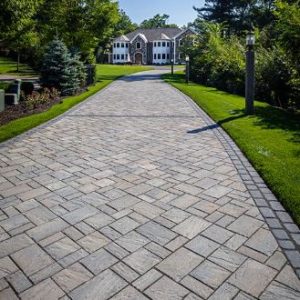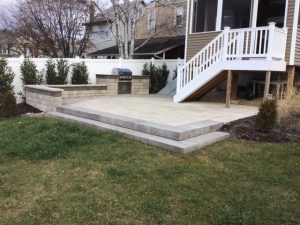March is quickly approaching, and I am sure all of us will be glad to see the snow gone. We are already starting to see bulbs poking through the ground and buds swelling on trees and shrubs. It’s time to start thinking about your landscape again even though you may not be able to see it at this point.
General spring gardening tasks include:
Remaining debris can cut off light to turf areas and prevent grass growth. Remaining leaves and old foliage in landscape beds can create mold and rot existing plants.
Dead, damaged, and diseased: look for broken and cracked branches, pruning them out will help your plants to heal properly and eliminate conduits for diseases and insects. Always look for crossing or rubbing branches, select one and remove it.
Summer flowering shrubs will set flower buds upon new growth so pruning them early will help to control size and shape.
Evergreen shrubs can be pruned for size or to remove odd stems and branches.
Ornamental grasses such as Pennisetum and hakonechloa benefit from not being cut back in the fall, leaving the old foliage helps insulate the crown and protect it from cold weather. Spring is the time to cut these grasses back to remove all the dead foliage.

Bed Edging
Creating edges on beds helps to retain the mulch within the bed. Whether your bed lines are straight or have nice sweeping curves a good 4” deep edge will also help to keep the lawn from migrating back into the bed as long as the mulch is kept 2-3” below the edge.
All plants will benefit from a feeding from time to time. Organic fertilization with micro and macro nutrients feeds the plants and soil. Organic fertilizers, unlike uncoated synthetic, will feed over time and not push large amounts of growth quickly.
Nobody likes weeds. Pre-emergent herbicides will reduce the weeds that pop up in the landscape. There are a wide variety of products on the market that control various weeds. Most people are familiar with Preen. If you have a specific weed issue, before spending money on something that won’t work, identify the weed and see if the product you choose will control it. For commercial products, you should also be concerned with the plants you are applying it around. The more weeds controlled by the product the greater the chances it will harm smaller plants like perennials and ground covers. Keep in mind pre-emergent efficacy is related to weather. The more rain we have the quicker the product will be degraded. A second application is often beneficial for season-long control. Preen lists a 6-month time frame that it is effective. Follow the recommended rates of application. Applying more than suggested won’t benefit you and just costs more. Apply less than suggested you will likely be disappointed with the results.
Mulching just makes the landscape look great or is there more to it than that? Mulch has cultural benefits to the garden that include:
- It will insulate the soil and prevent frost heave.
- Mulch retains moisture in the soil reducing the amount of watering required. By covering bare soil, you are eliminating drying winds and sun from direct soil contact thus reducing evaporation.
- Mulch prevents weeds by eliminating light from reaching the soil surface.

As the adage goes to much of a good thing is never good, the same holds true with mulch. Different mulches include but are not limited to:
Organic/double or triple ground mulch: This product is made from recycled green waste. Being “organic” and preventing yard waste from entering landfills is a landscape benefit. This product will break down over time depending on environmental conditions.
Compost: In most cases, compost used for mulching is leaf mulch. Leaf mulch generally comes from municipal yards that collect all the leaves and compost them for a season. There are several benefits and a few drawbacks to leaf mulch:
- It is generally free to township residents if you are willing to haul it home in your trunk.
- It is organic, minus the trash and unwanted chucks due to poor composting or turning. Compost helps improve the soil structure and amend clay soils. (if clay soils are a problem you should consider turning compost into the soil as deep as you can without damaging roots from existing plants.
- It will break down quickly so you should consider applying more than the usual 2” per growing season.
- Sometimes you get more than what you bargained for. No one knows who threw what into their leaf pile in the fall. If there were leaves and weeds in the pile then you could be getting those weeds with your mulch.
Dyed Mulch: Generally made from old wood that is ground up and run through a dye machine. There are a few color options but to keep it close to a “natural-looking” product stay with black or brown. This product will not break down as quickly as an organic alternative but will hold it’s color longer, this is really the only real benefit of using dyed mulch unless you prefer red, yellow, blue, or green mulch. Since it does not break down as quickly you need to be careful about how much you apply season after season.
Rubber mulch: Rubber mulch is made from recycled rubber and is generally available in black, brown, and red. As you can imagine it does not break down, therefore there is no benefit to the soil or plants in terms of adding organics to the soil. It will hold its color for seasons eliminating the need to mulch every year. It would great for swing sets and other play areas as well as the garden. It will migrate into the soil unless you use a weed cloth or geotextile fabric to separate it. It is quite expensive.
Some general rules of thumb for mulching relating to plant and soil health:
- 2-3” of mulch is sufficient to achieve the above-mentioned benefits.
- Different mulches break down at different rates in different conditions. After initial mulching maintains a 2-3” layer of mulch, don’t just blindly apply another 2” every season.
- Mulch should never be piled against tree trunks, shrub stems, and or perennial crowns. Are you familiar with the term “mulch volcano”? You should always be able to see the flare at the base of a tree. Mulch around a tree should be an accent not a mounded pile against the tree. This practice will lead to the tree producing roots along the trunk that grow out, realize they can’t go that far then start circling the tree within the much. This leads to the tree eventually choking itself to death.

- Mulch can become matted down creating a barrier to water and oxygen exchange. This is less likely to happen with organic mulches since they do break down, however, excess amounts can result in solid masses of mulch. Matting generally occurs more frequently with dyed mulch. Cultivation of the mulch will break it up. If it’s matted in a few areas and not others cultivate it, spread it around, then top-dress with new mulch to maintain that 2-3” layer.





